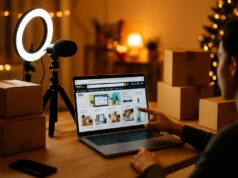When brands begin working with Amazon influencers, they often expect that every dollar of commission maps directly to sales generated by those creators. But with Amazon’s last-touch attribution system, only the influencer whose content triggers a purchase within 24 hours gets paid – leaving much of the funnel hidden. In this post, we’ll dig into how Amazon’s model limits visibility, why thinking only in “last-touch” is risky, and practical strategies you can use today to get fuller insight into performance.
Why Last-Touch Attribution Is Especially Limiting on Amazon
Amazon’s influencer program attributes commissions via a last-touch model: only the influencer whose content directly causes a sale within 24 hours of interaction gets credit. Earlier content – even if it built awareness or consideration – is invisible to Amazon’s attribution. Meanwhile, Amazon does continue to track that shopper internally for up to 14 days, and may serve content or ads to convert them later. But in terms of what you see (and what you pay), you only see that narrow 24-hour slice.
By the way, if you want to stay connected and know everything about social commerce and never miss a beat, join Logie today! Click here
In other words: you might not see many last-touch conversions in your Logie dashboard, but the influencer content is still driving traffic, interest, and demand behind the scenes.
What Neil Patel Says – And Why It Matters
Marketing thought leaders like Neil Patel warn that last-touch attribution “lies directly to your face” ; it oversimplifies complex customer journeys by giving all credit to the final interaction. Neil Patel Patel suggests looking at more holistic attribution models (linear, position-based, time-decay) and diving deeper into how different channels assist conversions. Neil Patel+1
In simpler terms: last-touch is real and valid in Amazon’s system, but it’s just one piece of a bigger puzzle.
The Gaps You Can’t See
Here’s what you won’t see when you only focus on last-touch:
- “Assisted” conversions are hidden. Influencers who shape awareness or consideration often get no visibility if they’re not the last touch.
- Funnel momentum is masked. A rising trend in sessions, page views, or conversion rate might suggest your campaign is lifting demand – but Amazon’s attribution won’t show it.
- Commission-driven behavior risk. If only aim for last-click conversions, they may neglect high-value content like reviews, tutorials, or long-term evergreen posts.
- Ads vs creatives credit tug. Because both ads and influencer content rely on Amazon’s last-click logic, only one touchpoint gets credit for a sale. Track Unit Session Percentage to see how influencer content truly boosts conversions, even when ads capture the final click.
What You Can Do Instead: A Smarter Strategy
1. Treat Last-Touch As One Signal, Not the Whole Story
Use Logie or Amazon’s dashboards to see which creators are capturing final conversions — but always cross-check with Amazon Business Reports (Sessions, Unit Session Percentage, Page Views) to see demand lift beyond that 24-hour window.
2. Use Amazon Attribution for Off-Amazon Content
If an influencer shares content offsite (social, blog, email), link them with Amazon Attribution tags. That gives visibility into how external traffic is converting (within a 14-day window). It doesn’t fix last-touch bias, but it helps fill in gaps.
3. Support the Funnel with Amazon Ads
Run Sponsored Products, Sponsored Display, Sponsored Brands, or other Amazon ads alongside your influencer content. Because Amazon’s ad systems also often use last-click logic, ads help you “own” critical conversion moments.
4. Create a Hybrid Compensation Model
Consider paying influencers a base fee for conversion to keep them motivated and consistent — not just chasing last clicks. Logie helps sellers take this a step further by combining real-time last-touch analytics with a broader full-funnel visibility approach. Logie AI-driven platform connects sellers with influencers who already convert in similar product categories – and tracks real-time last-touch analytics while encouraging content that builds awareness and conversion together.
5. Monitor for Advanced Attribution Tools
Watch for Amazon’s upcoming tools (Marketing Cloud enhancements, multi-touch experiments) that may expand visibility beyond 24-hour last-click.










